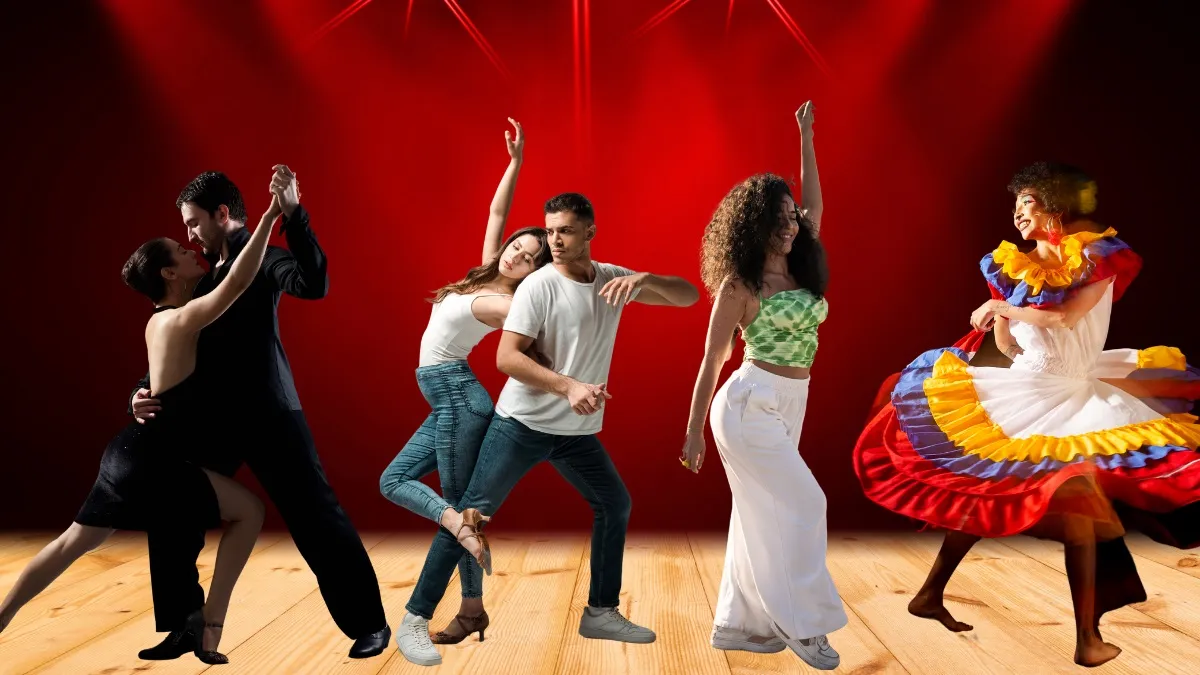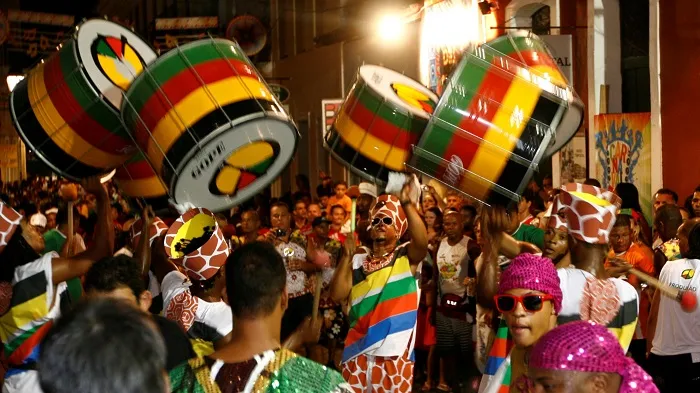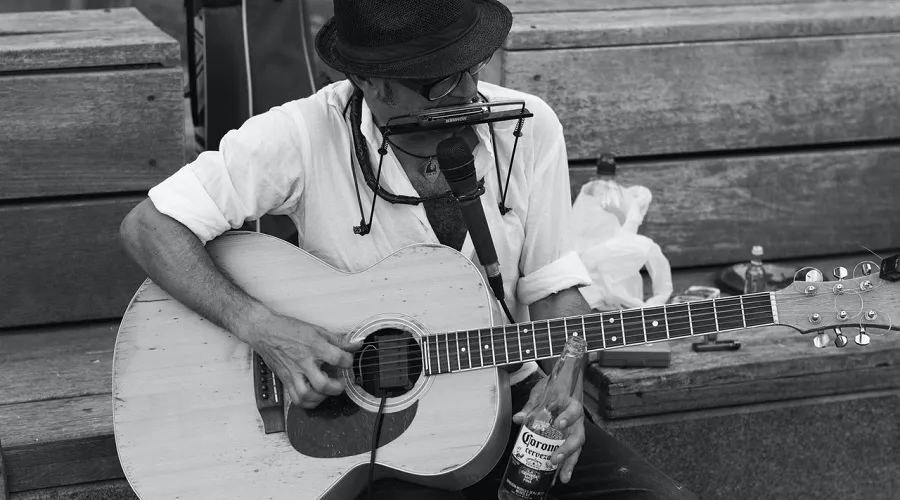Latin America has been shaken to its absolute core, torn between three centuries of colonial reign and political upheaval. The region saw its fair share of wars, drawing out from Guanajuato and all the way to Buenos Aires.
European, African, and American cultures danced together in Latin America like ruthless waves in a rumbling storm, almost tipping the ship over but giving meaning to its trip.
Amidst the bizarre cultural variety, Latin America didn’t get lost in the waves but rather re-emerged after the storm with a fresh paint layer of music genres, dances, and cuisines.
The colonial-era left quite the imprint on Latin America, reflected vividly in the variety of musical genres of the region.
If you’re interested in types of Latin music, your search landed you on the right page!
Latin Pop
Latin pop is American pop with Latin influences. It has the same characteristics as pop, but it’s sung by Spanish-speaking vocalists. It also features upbeat Latin music, adding a dancing flair to American pop music.
Because of its modern approach, Latin pop is now a favorite of pop fans worldwide. Artists like Paulina Rubio, Enrique Iglesias, and Shakira are pulling in new fans every day, bringing Latin music to the top of the mainstream phenomenon.
Before these artists converted the genre to a modern one, it was dominated by the likes of Roberto Carlos and Julio Iglesias, who topped the scene in the ‘70s.
At that time, the scene was all about heartbreak songs with Spanish lyrics.
Tango
With its intense music and sensual dance moves, tango quickly unrolled through Latin America as flame spreads through cotton. Dance halls around the region all hustled with dancers eager to put on a show with their partners, like Al Pacino famously did in Scent of a Woman.
Tango originated from both Uruguay and Argentina. However, it’s known as Argentine tango because the immigrant communities that lived in Buenos Aires in the 19th century gave it the shape we know today.
Between 1935 and 1952, tango was living its golden age. It evolved from its underground status to a popular form of music, and it survived through the Second World War, which is more than I can say for a lot of music genres that got lost along the way.
When the 20th century came around, tango became a worldwide favorite genre, thanks to legendary musicians like Carlos Gardel, commonly known as the King of Tango.
The music mostly only features the piano, guitar, violin, bandoneon, with some pieces featuring flute music. It’s best known for its staccato rhythms and abrupt movements.
Bachata
Although it originated in the ‘60s, Bachata didn’t gain popularity past the Latin borders until the ‘90s. It started off as a blend of two Cuban genres, bolero and son. By the ‘80s, it got reshaped into a more modern vision, adding the electric guitar into its assortment of instruments.
The reason Bachata got reshaped was its declining popularity in the ‘60s. The music was good, but merengue was better, which led the Latins to ditch Bachata.
This didn’t last for long, though. By the ‘90s, Bachata was topping the charts again, featuring the romantic element that the world desperately needed in that era.
Artists like Prince Royce and Hector Acosta shone more spotlight on Bachata, putting it into the mainstream phenomenon and grabbing the attention of the global audience.
Salsa
The way salsa came to life speaks volumes about the struggle of Latin American culture during the upheaval.
Back in the ‘40s, son was the most popular form of Cuban music. Artists who immigrated from Cuba to New York carried the genre.
Eventually, it blended with Afro-American jazz, and New York became a pot boiling these genres inside. Musicians from all over Latin America came to the city to witness the musical revolution cooking inside, but it didn’t last long.
Fidel Castro took reins of his country in the ‘60s, and the Cubans could no longer share their music in New York, leaving room for Puerto Ricans to fill.
The Puerto Ricans used influence from the Cuban son, Afro-American jazz, Latin boogaloo, and mambo, creating their own genre. This genre? You guessed right: salsa!
Regional Mexican Music
Regional Mexican music is pretty much the collection of genres that originated from Mexico. I could go long about Mexican genres, including corrido, norteno, ranchera, and all the different genres that made it out of the República Mexicana.
However, only two genres made it to the top of Latin music, gaining a global audience. Here’s an overview of norteno and Mariachi.
Norteno
Norteno originated in northern Mexico, which is evident in its name that means ‘northern’ in Spanish. It’s one of the oldest genres in Mexico, having originated in the 1800s. When the Czech and German immigrants arrived in Mexico pursuing opportunities in the New World, they brought their folk dance music along.
Mexicans learned all about the waltz, mazurka, and polka dancing and started practicing the dances on the rhythms of rural instruments. Shortly after, the practice splurged out into a genre of its own, played by bajo sexto, drums, and accordions—the typical instruments assortment you’d find in Mexican rural areas.
Despite its early birth, Norteno stayed alive throughout the 19th century, reaching its peak in the ‘70s. It passed the border to Texas, becoming the most popular genre there, particularly among the working class.
Mariachi
Mariachi is the go-to Mexican genre for all kinds of celebrations, including baptisms, birthdays, and weddings. It’s played mainly by string instruments, and its rhythms are as old as Mexico’s colonial history, going back to the 1500s.
Until the 1850s, Mariachi was only famous in small Mexican towns, particularly in the western region. The genre didn’t gain new audiences until the ‘30s of the new century when radio stations broadcasted it across the country.
From then, Mariachi gained a new angle, developing into festivals on its own, like the International Mariachi Festival that gets held in Guadalajara annually.
Reggaeton
If I were to pair two music genres into one, I would’ve never thought of rap and reggae together. But apparently, the Puerto Ricans have a better musical sense, and today’s famous status of reggaeton confirms that.
Puerto Rican musicians invented reggaeton in the ‘90s by blending influences of rap and reggae. And since hip hop and rap always go hand in hand, they included it too.
With some Caribbean rhythms here and Spanish vocals there, the music evolved to be the top Latin urban genre.
Now, artists like Calle 13, Pitbull, and Daddy Yankee are at the top of the genre, blending the hypnotic bass lines of reggae with the fast, steady rhythms of rap.
Brazilian Music
Mexico isn’t the only country that left a heavy impact on Latin American music. In fact, Brazilian music is responsible for the shape of Latin music today, compiling a heap of sensual genres like bossa nova and samba.
Today, Brazilian artists like Caetano Velono and Antonio Carlos Jobim are widely famous for their Latin songs.
Here’s an overview of the two most popular Brazilian genres in Latin America.
Samba
Like many things African that the rest of the world took credit for, samba originated in the Dark Continent and came to life in Latin America. The African slaves brought it to Brazil between the 16th and 19th centuries, and it remained Brazillian in the people’s consciousness despite its African origins.
By the 1900s, samba was a well-known genre in Brazilian favelas. It was primarily played by percussion instruments inspired by African drums. It also incorporated whistles, surdos, shakers, and snare drums.
Samba gave birth to many dance genres later on, primarily Brazilian. These include enredo, reggae, samba de Roda, de chave, ballroom samba, and cancao. Even bossa nova somehow spawned out of samba, blending with jazz elements.
Bossa Nova
After the unrivaled success of samba, the Brazilian folks decided to add their touch to the genre, creating a whole new one. Bossa Nova emerged from Rio’s tropical beaches in the ‘50s.
Middle-class musicians played samba with a softer approach, adding bits of American jazz to the rhythm. What they did for sheer fun later molded out into a new music genre.
It’s believed across Brazil that Joao Gilberto is the one who invented bossa nova. In the Latin country, he’s called ‘Father of Bossa Nova,’ or ‘O Mito’ in his native language.
You don’t need many instruments to play bossa nova. The genre only relies on piano, drums, guitar, and an African instrument called the berimbau.
Alternative Rock
All the other genres come and go; rock is the only genre that’s stable in all the world regions. It’s as famous in Latin America as it is in the US.
When Latins first played rock, they called it rock en Espanol. It was around the late ‘50s when the genre started gaining attention, thanks to Ritchie Valens’ La Bamba. La Bamba is originally a Mexican folk song, but Valens incorporated rock rhythms in it, unknowingly establishing a new genre.
By the ‘80s, the genre had already traveled across the Latin borders, erupting in Chile, Mexico, and even Spain. It quickly evolved to include more than just rock, becoming the main genre of Latin alternative music and getting out of the rock mold.
Alternative Latin now includes artists like Shakira, Andres Calamaro, and Soda Stereo.
Merengue
Like samba, merengue is originally an African genre that saw the light only in the Dominican Republic. It started off in the rough neighborhoods, which carried the wrong image to Latin Americans.
However, shortly after, the accordion was introduced to the Dominican Republic through German traders, and musicians started including it in merengue. The genre quickly got reshaped into a New-World style with tinges of African influences. Its central element is the quintillo, which is a rhythmic pattern of five beats.
Ironically enough, one of the reasons merengue got so famous is the dictator that Dominicans long hated, Rafael Leonidas Trujillo. Trujillo was a music fan, and he apparently took a liking to merengue. He created a campaign that broadcasted across the whole nation, promoting the Dominican genre and getting it the attention it deserved.
Long after Trujillo was assassinated, Wilfrido Vargas took it upon himself to create a new angle for merengue. In the ’80s, he changed the tempo of merengue. Juan Luis Guerra followed along, and he’s been an eminent singer of the Dominican genre since then.
Cumbia
Cumbia is the only type of Latin music on this list that originated in Colombia. The country didn’t only give birth to notorious drug lords and coffee bean fields. It left quite the imprint on Latin American music.
Cumbia is a unique blend of both African and European styles, stirring in the same pot with Amerindian rhythms. It utilizes a lot of rural instruments, such as accordions, flutes, drums, and maracas. However, it’s most famous for its heavy use of drums.
Crossing the borders of Colombia and rolling out into the other Latin countries, Cumbia gained a new perspective in every country it passed through. You’d hear it differently in Argentina, Chile, Peru, Cuba, and Mexico. Each country adds its own flair to the genre, but it refuses to give up its Colombian authenticity.
Son Cubano
Son Cubano translates literally into the sound of Cuba, and it’s one of many Afro-Latin music genres on this list. It laid the foundation for other styles that emerged later on, including salsa and jazz. The genre started off among native Cubans in the country’s highlands, blending African and European instruments.
The harmonic vocals of son Cubano were purely Spanish, and the heavy percussion screamed African. Together, they shaped son Cubano, which was initially a form of folkloric music in Oriente.
The genre is inspired by changui, rhumba, kiriba, and nengon, which all trace back to Bantu, the Central African region.
Like most other genres, son Cubano crossed the Latin border and got famous in many countries. It became a staple in New York’s nightclubs by the twentieth century.















